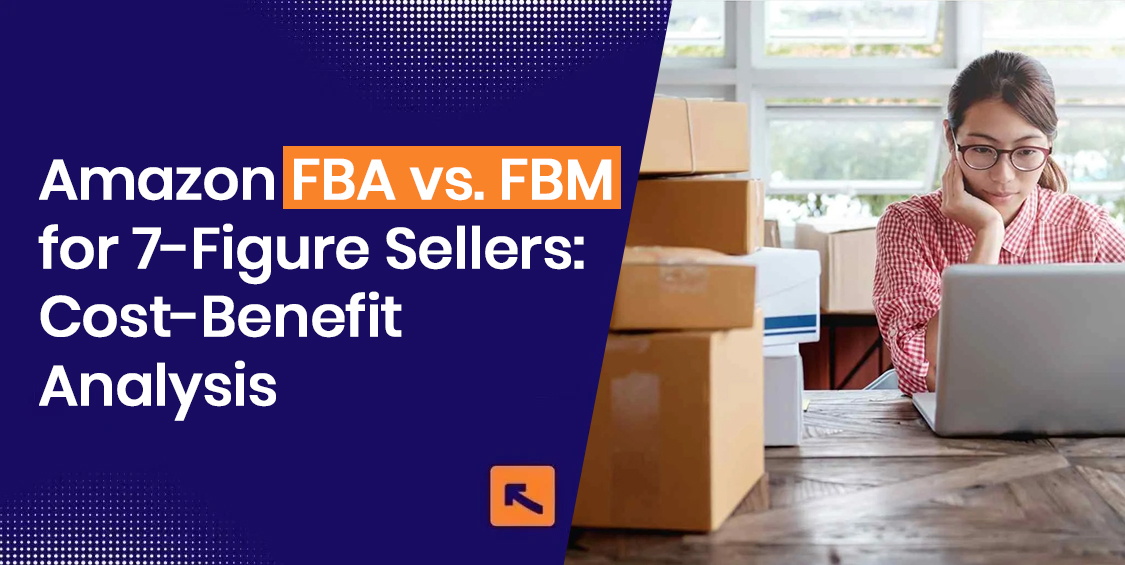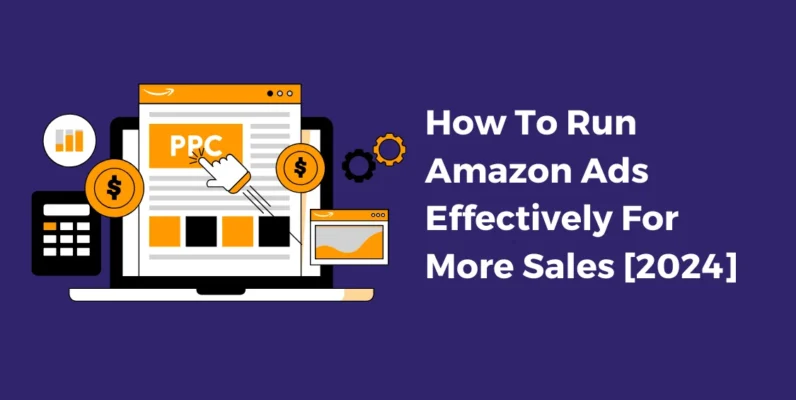For established Amazon sellers with 7-figure revenues, choosing the right fulfillment strategy—FBA (Fulfillment by Amazon) or FBM (Fulfillment by Merchant)—is a critical business decision. Each approach impacts operational costs, profit margins, and customer experience in unique ways. FBA takes the fulfillment and shipping process off your hands, while FBM gives you full control. This analysis dives into the financial and logistical implications of FBA vs. FBM, helping sellers maximize profits and operational efficiency.
Understanding Amazon FBA and FBM for 7-Figure Sellers
Fulfillment by Amazon (FBA)
With FBA, Amazon handles all aspects of shipping, including storage, packaging, and customer service. Sellers send their products to Amazon’s fulfillment centers, where items are managed until they’re sold and shipped to customers. FBA is particularly attractive for high-volume sellers who want to leverage Amazon’s logistics and focus on growth.
Key Benefits of FBA for High-Revenue Sellers:
- Prime Eligibility: FBA products are automatically eligible for Prime, significantly increasing visibility and potentially boosting conversions.
- Customer Service Managed by Amazon: Amazon’s support team handles returns, refunds, and customer inquiries, reducing workload for sellers.
- Scalability: FBA’s infrastructure allows for handling large order volumes during peak seasons without scaling up in-house resources.
Fulfillment by Merchant (FBM)
FBM allows sellers to manage their own fulfillment operations, either directly or through a third-party logistics provider. This model is often favored by brands with established warehousing or those needing more control over inventory.
Key Benefits of FBM for High-Revenue Sellers:
- Cost Control: FBM allows sellers to directly control fulfillment costs, which can be advantageous if you already have warehousing capabilities.
| Cost Type | FBA | FBM |
| Fulfillment Fees | Charged per unit, varies by size and weight | Managed in-house or through 3PL fees |
| Storage Fees | Monthly storage fee, spikes in Q4 | Warehouse costs depend on seller’s choice |
| Shipping Fees | Included in FBA fees | Paid by seller, variable by carrier |
| Customer Service Fees | Included | Managed in-house or outsourced |
| Returns & Refunds | Amazon handles, fee per return | Seller handles, direct return costs |
- Custom Packaging and Branding: FBM offers more control over packaging, which is beneficial for brands focusing on unique unboxing experiences.
- Lower Fees for Large or Heavy Items: For products with high storage fees or oversized dimensions, FBM can be more cost-effective.
Cost Comparison: FBA vs. FBM
Choosing FBA or FBM largely depends on cost implications, which impact high-revenue brands differently than smaller sellers. Below is a breakdown of core costs involved in each model.
When to Consider FBA for Cost Efficiency
For 7-figure sellers, FBA might be preferable for products that are lightweight, have high turnover, or benefit from Prime visibility. FBA’s fulfillment fee structure can be efficient when products are smaller and move quickly.
Example Tip: Use FBA’s Inventory Performance Index (IPI) to optimize storage levels and avoid excess fees, particularly during peak shopping seasons.
When to Consider FBM for Cost Efficiency
For products with large dimensions, low turnover, or custom packaging, FBM offers cost control advantages. If a seller has existing warehousing or 3PL partnerships, FBM can allow them to leverage these resources.
Example Tip: Set reorder alerts in Seller Central to avoid stockouts, especially if you’re managing international FBM fulfillment from one centralized warehouse.
Operational Control and Flexibility
For 7-figure sellers, operational control is a significant factor in choosing between FBA and FBM.
- FBA: Sellers surrender control over packaging, branding, and customer service but gain access to Amazon’s logistics expertise.
- FBM: Sellers retain control over each aspect of order fulfillment, which can be crucial for branding, customization, and packaging choices.

Pros of FBA for Streamlined Operations
FBA automates fulfillment logistics, letting sellers concentrate on scaling their product lines. However, this model also means relinquishing control over packaging and customer service, which some brands might view as a trade-off.
Pros of FBM for Hands-On Control
For brands that emphasize customer experience and control over the post-sale experience, FBM offers the flexibility to manage customer support, handle returns personally, and tailor packaging to suit brand aesthetics.
Impact on Sales and Customer Experience
The fulfillment method directly impacts sales volume and customer satisfaction. Since Amazon prioritizes Prime-eligible listings, FBA items often enjoy greater visibility. However, for well-established brands, customer loyalty and brand trust can allow FBM listings to thrive independently.
FBA’s Impact on Sales and Visibility
Products fulfilled by FBA are more likely to appear in search results, especially for customers filtering by Prime shipping. For 7-figure sellers, the additional visibility can result in a noticeable sales lift, particularly during peak shopping times like Black Friday and Prime Day.
FBM’s Impact on Brand Identity and Customer Loyalty
FBM allows sellers to differentiate their offerings, which is essential for premium brands or products requiring custom packaging. With FBM, you have the option to offer alternative shipping methods, cater to non-Prime customers, and handle customer inquiries in-house for a personalized experience.
Example Tip: For brands choosing FBM, add an infographic comparing shipping speeds and customer benefits to help Prime customers understand the trade-offs.
Choosing the Right Model Based on Product Type
Some products align naturally with FBA or FBM, depending on dimensions, weight, and demand cycles.
- Best for FBA: Small, high-demand items that sell quickly and benefit from Prime eligibility.
- Best for FBM: Large or bulky items, custom or fragile goods, and products with seasonal demand that doesn’t justify continuous storage in Amazon’s warehouses.

Risks and Considerations for 7-Figure Sellers
While FBA provides stability in fulfillment, it can lead to risks such as stockouts during peak demand or unplanned storage fees. FBM has fewer upfront risks but can be operationally demanding.
FBA Risks
- Stockout Risks: Since FBA items rely on Amazon’s stock and fulfillment, high-demand periods can lead to inventory shortages.
- Unexpected Fees: FBA storage fees increase during Q4, impacting profit margins if products are slow-moving.
FBM Risks
- Lower Visibility: FBM items lack Prime eligibility, which may lead to fewer conversions if customers prioritize Prime shipping.
- Operational Complexity: Managing logistics in-house demands more oversight and can be challenging if unexpected shipping or customer issues arise.
Whether you’re an established brand owner or a new Amazon seller, its always better safe than sorry! So learn more about How To Sell On Amazon FBA Wholesale Like A Pro? [2024] and learn from your peer’s mistakes and avoid the most common errors on Amazon FBA.
Conclusion: Finding the Right Balance for 7-Figure Sellers
For 7-figure Amazon sellers, selecting between FBA and FBM isn’t simply a matter of cost; it’s about aligning the fulfillment method with brand goals and operational capabilities. FBA offers a low-touch solution ideal for sellers with high-demand, smaller items, while FBM allows hands-on control, suitable for premium or oversized products. Many successful brands choose a hybrid approach, where they leverage FBA for some SKUs while retaining FBM control over others, maximizing cost efficiency and brand consistency.If you’re navigating this decision, working with an expert agency like AMZDudes can simplify the process, guiding you on optimal fulfillment strategies tailored to your business needs. Get in touch with us today to discuss your Amazon growth strategy!




